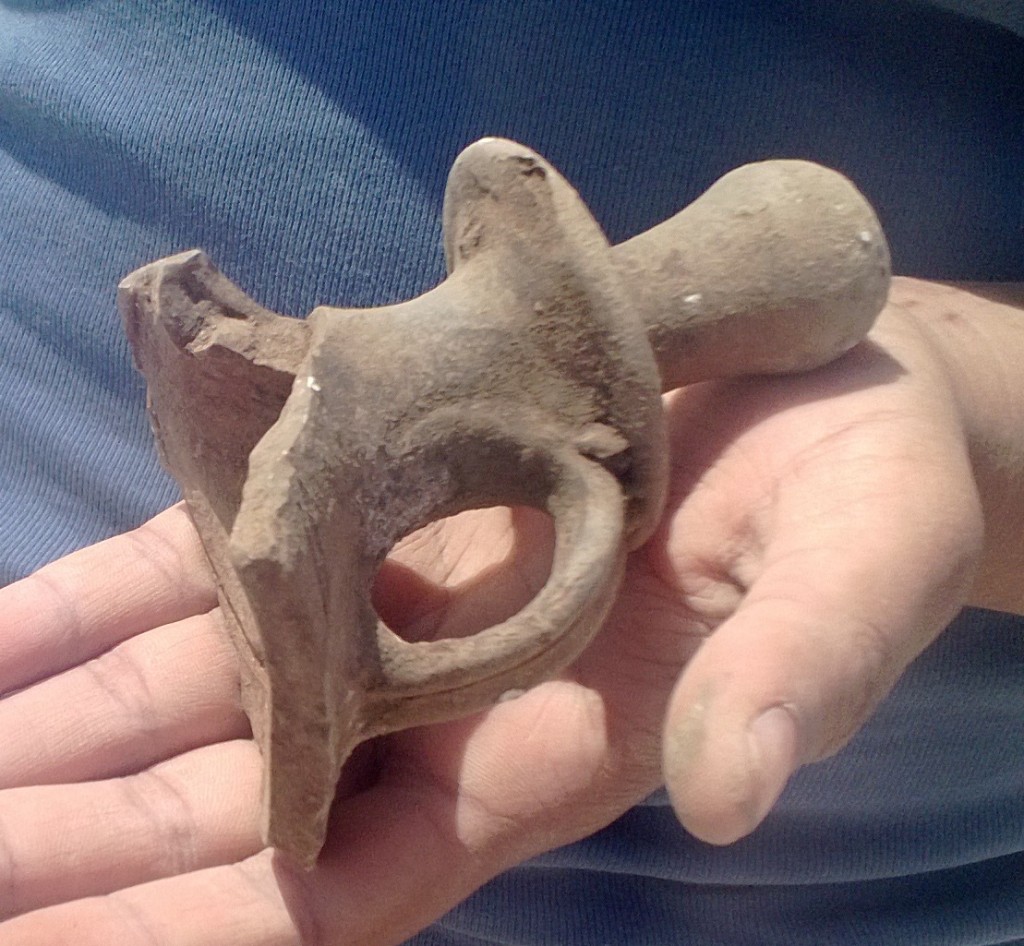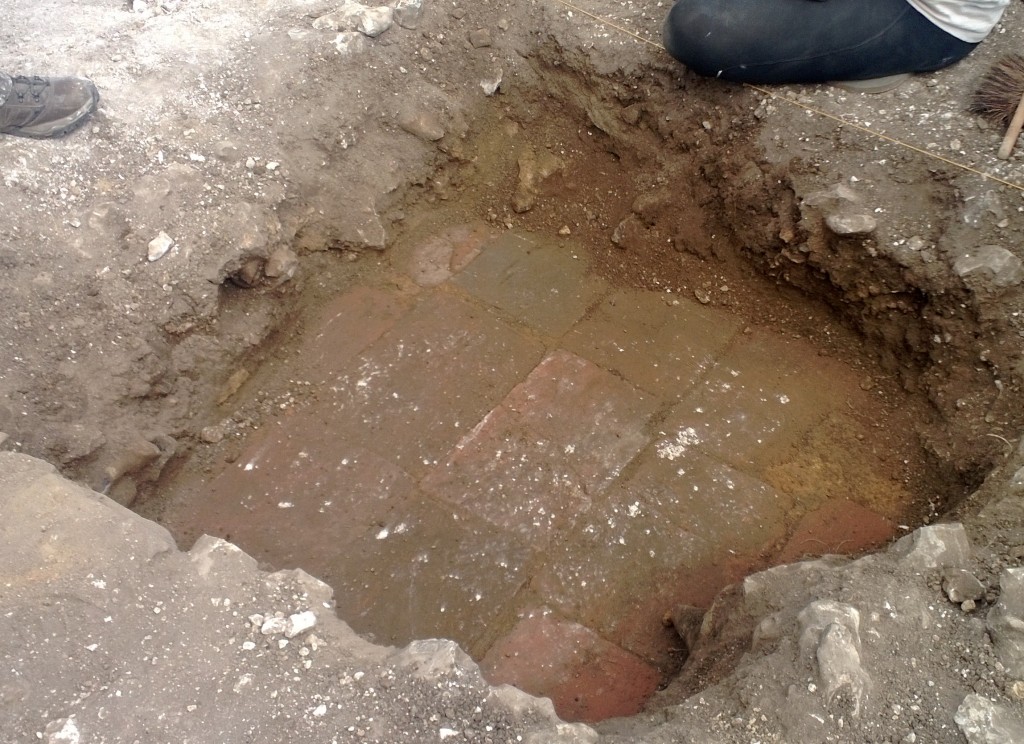Monday 3rd June 2013
Feature 2069 from Area J has been the star area for finds today. The feature consists of a square flint-lined area and initially was considered to be a type of waste pit. The first artefact recovered from this feature was a sizeable glass bead, as pictured below.
The next great find from this complex feature was a fragment of a Roman olive oil dispenser by Archaeology, Anthropology and Forensic science student Akilah Moxam. The olive oil dispenser is thought to be Late Roman and is indicative of the lifestyle and subsistence of the population at the time. This extremely interesting find is pictured below.
However the most interesting find did not emerge until later in the day by students Sophie Avison, Akliah Moxam and Richard Brennan. An intact floor in situ was found, as pictured below.
Initially it was hypothesized that the tiles were re-used as a floor from roof tiles. However when the area was cleaned back further, the tiles did not have the characteristic nail holes, usually found in Roman roof tiles. Further excavation of the other section will determine the extent of the intact floor and aid the interpretation of the structure’s purpose. At this moment, the interpretation is widely ranging from a grain dryer to a Roman passageway.
Elsewhere on the site, excavation has been continuing on the house platforms and on the features that pre date the Banjo Enclosure. The pottery finds from one of the house platforms in Area J was characterized by pie crust South-East Dorset Orange Wiped ware, as pictured below.



